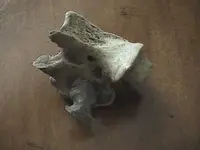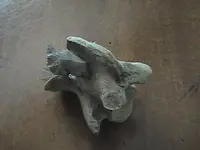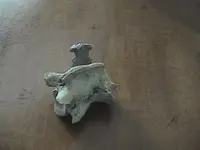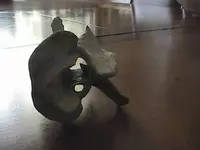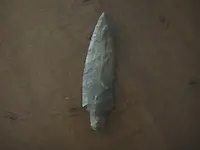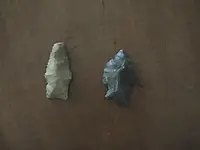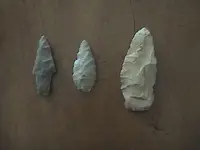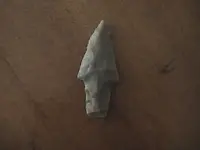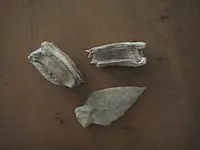Your arrow
This was given to me by a friend when I was a kid. Obviously he didn't know what he had and I never found out where it was found. It's been in a display case at my parent's for 20 years. Can somebody tell me what kind of point it is and what kind of bone it may be, I know its a spinal bone but I hope it's not human. I don't think I could ever sell it but I do wonder what it's worth.
It appears to be the first lumbar bone of an American bison. The arrow is typical flint used by A plains indian. Perhaps Apachee but not sure. It is basically a broad tipped arrow used for big game.
There are all sorts of videos on you tube showing their penetration power and even one that showed it to be superior to modern broad tipped arrows.
The angle of incident through right superior pedicel approximately 1/2 inch into the spinal canal suggests that the shooter was mounted on a horse. This means it was fired between 500 (when Spanish reintroduced the horse to North America) and about 120 years ago (when domestication and firearms negated this method of hunting)
All this is assuming that it is real and not a, "reproduction" popular from the 5o's when car loads of tourist would travel to the old west in search of, " real artifacts" while in vacation.
One of the best ways to tell is to see if you can physically remove the arrow by hand. If you can then it's almost positively a fake. Why would an indian leave a valuable tip in the bone?
If it stayed in the bone and the bison lived- unlikely- then the bone would grow around the wound.
If it is between 500-120 years ago and it was outside all that time before it was found, particularly if it was buried then the petrification process would have begun turning the bone to rock or dust. You can look at where the flint and bone meet and see if there is an exchange of ions that looks like the flint is becoming part of the rock and vice versa. The older the bone the longer the line. It should be uniform in shape.
There are examples of Greek arm bones being hit by arrow tips from 2500 years ago in which this line looks like it was painted solid along the entire point of contact. Your sample should not be so prominent being as that it is only a few hundred years old if real. Not saying that it is.
Please provide more detailed pictures showing the point if contact magnified with a better lighting source.



